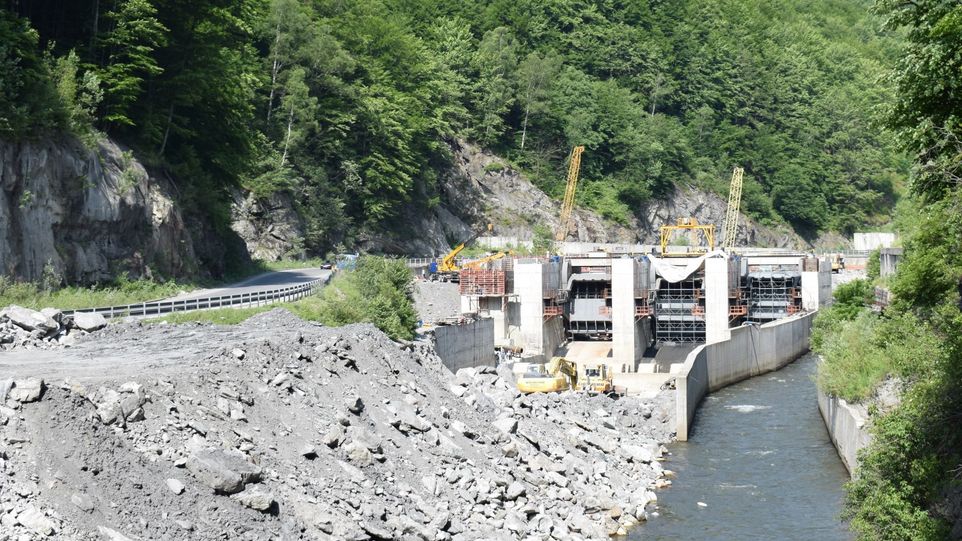
More harm than good

Around half of the hydropower plants in Romania are located in nature conservation areas. The small plants contribute only 3 percent of Romania's electricity generation, but threaten biodiversity.
05/31/2021 · Umweltwissenschaften · Leibniz-Institut für Gewässerökologie und Binnenfischerei · News · Forschungsergebnis
Hydropower is renewable, but mostly not environmentally friendly. A study led by IGB shows for Romania how the expansion of hydropower runs counter to the goals of EU environmental policy. Hydropower conflicts with the requirements of the Flora-Fauna-Habitat Directive (Natura 2000) and the European Water Framework Directive (WFD): around half of the hydropower plants in Romania are located in nature conservation areas. These are mostly small plants that contribute only 3 percent of Romania's electricity generation, but threaten biodiversity. Therefore, European energy policy urgently needs to be aligned with the goals of the EU Biodiversity Strategy, the researchers warn. Otherwise, there is a risk of significant losses of freshwater biodiversity, and the goals of the EU Green Deal would not be achievable.
Compared to other European countries, Romania still has many natural and near-natural freshwaters that are biodiversity hotspots. Yet, at least 545 hydroelectric power plants (HPPs) have been built so far, and the construction of more is to be subsidized. In their overview of the geographic distribution, the researchers show that 49 percent of the existing power plants are located in EU Flora-Fauna-Habitat areas or other protected areas; 17 percent of the HPPs were built in near-natural or natural river systems that were previously in "very good" or "good" ecological status under the European Water Framework Directive and therefore should not be harmed.
"It is true that a European guideline basically specifies the requirements that hydropower plants located in EU Flora-Fauna-Habitat areas must meet. Unfortunately, however, there is a lack of implementation of these requirements, because small hydropower plants become uneconomical if, for example, they are equipped with functioning fish passes in order to meet the environmental requirements. Unfortunately, the legally binding nature of environmental requirements at hydropower plants is also controversial, both for new and existing hydropower plants," said Martin Pusch, co-author of the study from IGB, explaining the basic problem.
Fish like brown trout and European bullhead strongly affected
The hydropower plants studied significantly affect fish populations both upstream and downstream of the dam, for example by diverting water from the main course, as a barrier to migration, and through river regulation. The research team compared current abundances of brown trout and the EU-protected European bullhead at 32 monitoring sites in Carpathian streams to reference data collected before the HPP construction. "62 percent of upstream and downstream reaches of the streams have lost one or both fish species compared to the reference period. 38 percent of upstream and 19 percent of downstream reaches now lack one fish species, and 24 percent of upstream reaches and 43 percent of downstream reaches lack both fish species that were expected there. This is a frighteningly negative result," emphasized Gabriela Costea, first author of the study and former IGB-researcher.
In particular, the mass of small hydropower plants is problematic
The hydropower boom in Romania is mainly due to the implementation of the European Renewable Energy Directive, which was accompanied by subsidies for the construction and operation of HPPs. As a result, many small HPPs with up to 10 MW capacity were built, which hardly contribute to energy production – only three percent of total energy production comes from these more than 500 small plants. Environmental standards were often not sufficiently taken into account during construction: "Environmental impact assessments are carried out for very large hydropower projects in Romania, but very rarely for smaller ones. And in the few cases where these reviews are made, their quality is far from meeting the standards of the relevant European directive," explained Martin Pusch.
At present, numerous other HPPs are in the planning or construction stage. Particularly controversial is the construction of the Dumitra HPP in the Jiu River Gorge National Park on one of the last unobstructed rivers in the Southern Carpathians. The construction permit for this HPP was annulled by the Court of Appeal in Bucharest because it is expected to have a negative impact on the protected habitats and animal species in this EU Flora-Fauna-Habitat area. However, the national environmental protection agency does not want to recognize this legally binding ruling and wants to carry out a new environmental assessment in order to obtain a building permit after all.
"However, the problem does not only concern Romania or Southeastern Europe, but requires fundamental clarification. The EU should urgently make its own environmental and energy policies coherent in order to resolve the serious conflicts of objectives. Otherwise, the goals of the EU Green Deal will hardly be achieved with the current regulations. Fortunately, there is the possibility to switch to renewable energy supply AND to preserve or renaturalize most of the streams and small rivers in Europe – because their low hydropower is negligible for the success of the energy transition", Martin Pusch summed up.
Original publication
Gabriela Costea; Martin T. Pusch; Doru Bănăduc; Diana Cosmoiu; Angela Curtean-Bănăduc (2021): A review of hydropower plants in Romania: distribution, current knowledge, and their effects on fish in headwater streams, in: Renewable and Sustainable Energy Reviews, 145(2021), Art. 111003.